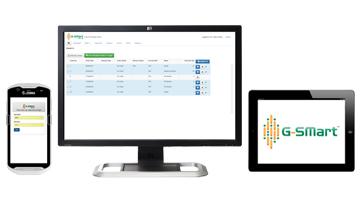Supply chains are essential to running your business, as no business can achieve increasingly efficient goals without addressing its supply chain’s needs. Think of the supply chain as a river with your company halfway along it. Upstream is where you receive all the incoming items you need, and downstream is where you send items to your paying customers. Disruptions at either end will have ripple effects along the length of the chain.
Any plans to optimise your business must include reviewing your supply chain so that you can address any emerging issues as soon as possible.

Why Are Supply Chains Erratic?
Supply chains worldwide were hindered by unforeseen international events such as the 2020 pandemic, and even three years later, they have not completely returned to their reliable predictability. While these undesirable changes negatively affect the entire supply chain, most businesses find their problems coming from upstream.
Competition across global trade is an ongoing issue that is substituting existing policies and creating new ones to change many existing supply chains. Increased demand for raw materials exacerbates this business competition across many areas of industry and puts strain on the logistics sectors. For decades, supply chains were largely focused on B2B services, but with the sharp increase in eCommerce’s popularity, warehouse storage space and transportation services are being clogged up with many smaller deliveries that delay the arrival of your business’s vital resources.
Whilst each business’s upstream supply chain is getting busier, there are reductions in capacity, labour and time that force companies to extend lead times, increase costs to meet expenses and risk an overcrowded system misplacing your valuable items with damaged packaging labels and cause further delays. Fortunately, there are beneficial actions businesses can take to optimise their specific supply chains to create a more reliable, secure and efficient chain both up and downstream.
Here are some tips on reviewing, analysing and optimising your supply chain.

1. Be Aware of the Three Supply Chain Phases
The details of each supply chain will be unique to each business. Still, three main phases apply to every business building an action plan for their supply chain management.
Design is the first step and will create a general view of your supply chain stream, such as where you are sourcing your items or materials and your targeted customer’s locations. With the changing nature of supply chains, this step must be adaptable to compensate for any new events. In addition, designing your plan will need to cover the capabilities of every step, such as your inventory space and lead times required to receive goods and deliver them to customers.
Planning is similar to design but is localised to the job you want fulfilling. This step should address the very specific needs of what your customer is paying for and the current state of your suppliers and the chain. This step is particularly important if your business has seasonal highs and lows that can be predicted and planned for. With sufficient planning, you can adapt your stream to meet your requirements all year round.
Execution involves exacting the previous two phases and monitoring the results. This can be achieved remotely with asset tracking labels or tags attached to your items, creating real-time reports of their progress. If any issues arise throughout our operations, you can review these events to find better ways of achieving your goals in the future. Improving your supply chain transparency will help you build an effective management system.

2. Create Supply Chain Transparency
Supply chain transparency relates to how clear the data is regarding your goods’ transportation and up and downstream operations. Transparency in the supply chain is essential for:
- Real-time progress updates: Companies will better understand their supply chain by creating a clearer picture of every step and the progress of their items at every stage.
- Increase responsibility: Transparency in the supply chain aids in ensuring that all participants are held accountable for their actions and that the supply chain conducts itself ethically and responsibly. Any issues such as misplaced, lost or stolen items can be investigated thoroughly to find when the event happened and correctly assign accountability.
- Reduce risk: Companies can lessen the likelihood of supply chain disruptions like product recalls or delivery delays by providing a clear and precise record of how resources and goods move through the supply chain. This data can be analysed to help improve your future supply chain management plans.
- Boost productivity: Transparency in the supply chain helps to reduce lead times, increase efficiency, and improve delivery schedules by streamlining processes and improving communication, thanks to effective asset tracking systems.
- Enhance customer contentment: Companies can increase customer satisfaction and build trust by providing their clients with accurate and up-to-date information about the supply chain. Providing accurate information on the status of jobs is essential to presenting your company as a capable member of your sector and one that can be relied upon for honest assessments despite the currently erratic nature of supply chains.

Optimise your Supply Chain With GSM Barcoding
At GSM Barcoding, We have provided the tools for effective supply chain management to a broad range of businesses in both commercial, industrial and eCommerce sectors.
G-SMart Stock software is our preferred system for the logistics of your supply chain items. All of your labelled products can be tracked by this software from their arrival to their departure. You can create a clear and effective digital inventory management system with effective integrations with other products and modular mobile features. With this system, you can monitor the progress of your supply chain items and significantly improve your supply chain transparency for both you and your stakeholders.
Discover our varied range of mobile asset tracking and barcode inventory systems to successfully optimise your supply chain today.


















